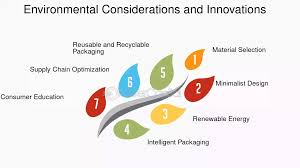The Evolution of Packaging Materials: How Innovation Shapes Business Success
Packaging materials play a pivotal role in today’s fast-paced and ever-changing marketplace. From protecting products to creating a memorable first impression, the importance of quality packaging cannot be overstated. As industries evolve, so too do the materials used for packaging, resulting in more efficient, cost-effective, and sustainable solutions. In this blog, we will explore how innovations in packaging supplies have revolutionized the way businesses approach packaging and how it impacts both the brand and the consumer.
A Shift Towards Sustainability in Packaging Materials
As consumer awareness regarding environmental issues continues to grow, businesses are under increasing pressure to adopt sustainable packaging solutions. Traditional packaging materials, such as plastic, are being replaced with biodegradable, recyclable, or compostable alternatives that have a lower impact on the environment.
The demand for eco-friendly packaging supplies is higher than ever, and companies that make sustainability a priority are not only helping the planet but are also appealing to a growing base of environmentally-conscious consumers. Whether it’s using recyclable cardboard, plant-based plastics, or paper alternatives, businesses that prioritize sustainability stand out as responsible corporate citizens.
The Role of Technology in Packaging Innovation
Advancements in technology have allowed for the development of smarter, more efficient packaging solutions. Automated packaging machines, for example, are becoming increasingly popular for businesses looking to improve efficiency, reduce labor costs, and streamline their operations. These machines ensure that packaging is consistently applied, eliminating human error and speeding up the packaging process.
Moreover, technology has enabled the use of smart packaging, which incorporates sensors, QR codes, or RFID tags to provide valuable information about a product. Smart packaging not only helps businesses track products but also provides customers with interactive experiences. Through packaging supplies that integrate technology, businesses can engage consumers in new and exciting ways.
Custom Packaging: Enhancing Brand Identity and Customer Experience
Today’s consumers crave more than just a product—they seek an experience. Custom packaging has become an essential element in delivering that experience. By using unique designs, colors, and materials, businesses can create packaging that reflects their brand identity while providing added value to the customer.
Custom packaging supplies also give businesses an opportunity to showcase their creativity and differentiate themselves in a crowded marketplace. Whether it’s through the use of bold colors, logos, or even personalized messages, custom packaging can leave a lasting impression and drive customer loyalty. In fact, packaging has become so important that studies show customers are more likely to remember a brand if the packaging stands out and provides an engaging experience.
The Impact of Packaging on Product Protection
Packaging has long been seen as a means to protect products during shipping, and that’s still its most critical function. However, as consumer demands and shipping practices have evolved, the need for packaging that offers enhanced protection has become even more significant.
For example, fragile items like electronics or glassware require specialized packaging supplies that ensure their safety throughout the shipping process. Materials such as foam inserts, air-filled cushions, and custom-molded trays are essential to ensure that products arrive at their destination intact. By investing in quality packaging, businesses can significantly reduce the risk of damage and returns, enhancing customer satisfaction in the process.
Optimizing Packaging for Efficiency and Cost-Effectiveness
One of the key challenges that businesses face is optimizing their packaging processes to reduce costs while maintaining quality. Inefficient packaging can result in higher shipping costs, excessive waste, and lower profit margins. To address these issues, companies are looking for packaging supplies that provide maximum protection while minimizing excess materials.
Streamlined packaging, such as lightweight materials and space-saving designs, can significantly reduce shipping expenses, making the process more cost-effective for businesses. Moreover, by investing in efficient packaging supplies, businesses can reduce their environmental footprint, contributing to their sustainability goals.
Packaging Supplies and the Rise of E-Commerce
The boom in e-commerce has dramatically changed the way products are packaged and shipped. As more consumers turn to online shopping, the demand for packaging that protects products and enhances the unboxing experience has skyrocketed. Online retailers are now using packaging supplies that are not only practical but also serve as an extension of their branding efforts.
In e-commerce, packaging serves as the first physical touchpoint between a business and its customers, making it a critical component of customer experience. From durable boxes to personalized tissue paper, companies are paying more attention to the presentation of their products during shipping. The unboxing process has become a significant part of the customer journey, with many consumers sharing their experiences on social media, which can amplify brand visibility.
Future Trends in Packaging Materials
As the world continues to innovate, so too will packaging materials. The future of packaging will likely see more developments in sustainable materials, including plant-based packaging, water-soluble options, and packaging made from agricultural waste. In addition, the continued rise of automation and smart packaging will provide businesses with more efficient ways to protect their products while delivering more personalized experiences for customers.
Moreover, businesses will likely continue to adopt packaging that aligns with their brand ethos, particularly as younger generations place more emphasis on sustainability and social responsibility. Packaging supplies will evolve to meet the needs of an ever-changing market, providing businesses with the tools to remain competitive and environmentally conscious.
Conclusion
The importance of high-quality packaging supplies cannot be overstated in today’s competitive business environment. From protecting products and enhancing brand identity to improving sustainability and customer experience, the right packaging materials can make a world of difference. As businesses continue to innovate, investing in top-tier packaging supplies will ensure that products are well-protected, attractively presented, and delivered in the most efficient manner possible.
By staying ahead of packaging trends and adapting to customer demands, businesses can gain a competitive edge, foster brand loyalty, and contribute to a more sustainable future. As technology and sustainability shape the future of packaging, companies that prioritize quality and creativity will continue to lead the way.










